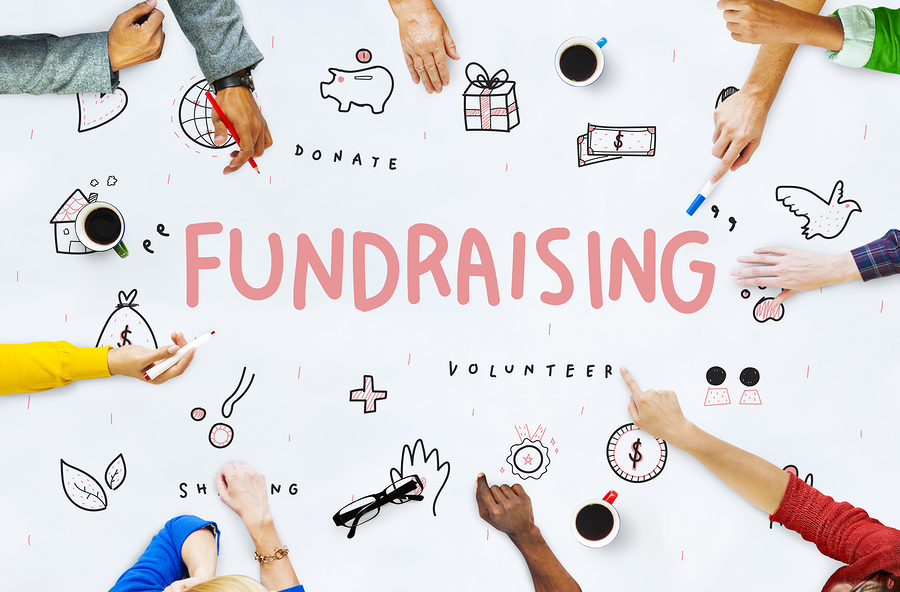Fundraising Consultant: Professional Advice to Enhance Your Nonprofit's Fundraising
Fundraising Consultant: Professional Advice to Enhance Your Nonprofit's Fundraising
Blog Article
The Duty of Community Involvement in Nonprofit Fundraising: Building Lasting Relationships for Sustainable Support
Community involvement is progressively recognized as a crucial component of effective not-for-profit fundraising. The methods and approaches used to engage communities differ widely, increasing essential questions regarding efficiency and influence.
Recognizing Area Involvement
Community interaction is an essential part of successful nonprofit fundraising efforts. Nonprofits have to identify essential stakeholders-- such as neighborhood participants, regional businesses, and other companies-- to create efficient engagement techniques.
Efficient neighborhood interaction is based on active listening and responsiveness to the needs and interests of the area. This procedure includes soliciting comments, recognizing area dynamics, and making sure that the organization's goal straightens with regional top priorities. Involving the area can take numerous types, including public conferences, volunteer possibilities, and collaboration initiatives, each made to urge involvement and investment in the organization's objectives.
Additionally, area interaction must be come close to as an ongoing dialogue instead of a single initiative. By cultivating an inclusive environment where neighborhood voices are listened to and valued, nonprofits can develop a solid structure for future fundraising undertakings. Ultimately, a deep understanding of neighborhood involvement equips organizations to produce authentic links that boost their general effectiveness and sustainability.
Advantages of Strong Relationships
Solid partnerships created with neighborhood engagement yield countless advantages for nonprofit fundraising initiatives. Firstly, these relationships foster trust fund and credibility, essential parts in motivating contributors to add. When possible advocates see a not-for-profit actively associated with their community, they are more probable to believe in its objective and influence.

In addition, these connections assist in effective interaction. Nonprofits can take advantage of their links to share stories of influence, updates, and needs, guaranteeing that fans stay educated and engaged. This open line of interaction not only strengthens bonds however additionally encourages word-of-mouth promotion, broadening the nonprofit's reach.
Lastly, solid neighborhood ties can bring in new partners and sponsors. Companies and people are more inclined to straighten with organizations that demonstrate meaningful neighborhood participation, giving extra sources and support that can significantly improve fundraising abilities. Therefore, growing robust relationships through neighborhood involvement is essential to a nonprofit's lasting fundraising success.
Techniques for Effective Engagement
How can nonprofits successfully involve their areas to enhance fundraising efforts? Routine updates, involving content, and calls-to-action can galvanize area rate of interest and involvement.
Second, holding community occasions, such as workshops, volunteer possibilities, or fundraising drives, helps with in person interaction, allowing nonprofits to display their influence and efforts. These events not just elevate funds however also cultivate connections and allow community members to engage straight with the cause.
Third, executing personalized communication techniques can enhance interaction. Tailoring messages to details benefactor segments based upon passions and past payments fosters a sense of belonging and financial investment in the company's goal.
Finally, developing collaborations with regional companies and community leaders can enhance outreach efforts. Joint initiatives can boost presence and credibility, demonstrating a cumulative dedication to the area's health. By integrating these methods, nonprofits can build lasting connections that enhance fundraising efforts and drive sustainable support.
Measuring Interaction Success
While involving the neighborhood is critical for effective nonprofit fundraising, measuring the efficiency of these engagement efforts is equally vital. Establishing clear metrics enables organizations to examine exactly how well they are getting in touch with their audience and accomplishing their fundraising objectives. Trick efficiency indications (KPIs) such as donor retention rates, volunteer engagement degrees, and involvement on social media systems provide substantial information look at here for evaluation.

Regularly evaluating these metrics makes it possible for organizations to pivot their techniques when necessary, making certain that neighborhood engagement stays lined up with their overall mission. Additionally, sharing these results with stakeholders fosters transparency and develops trust fund, urging additional area involvement. Eventually, a robust measurement structure not only notifies future fundraising efforts yet also enhances the partnership between the nonprofit and its advocates, laying the groundwork for lasting success.
Study in Community Impact
Various case researches illustrate the profound influence that neighborhood interaction can carry not-for-profit fundraising success. One notable instance is the "Something to chew on" campaign, where a local food bank partnered with institutions and companies to host area dinners. These events not only elevated funds yet likewise promoted a sense of belonging among individuals, significantly boosting donor retention rates.
One more compelling case is the "Green Spaces Project," which included regional citizens in the revitalization of city parks. This effort not just gathered financial backing from local organizations yet likewise cultivated a volunteer base that contributed to continuous upkeep and programs. The feeling of possession and pride amongst area participants translated right into sustained payments.
In the world of arts, the "Art for All" campaign efficiently engaged local musicians and patrons to develop collaborative art setups, bring about enhanced exposure and donations for a neighborhood arts nonprofit.
These examples highlight that when Full Report nonprofits focus on community involvement, they can develop enduring partnerships that improve fundraising initiatives, ensuring lasting support and promoting a vivid community culture. Such instances demonstrate that neighborhood interaction is not simply a technique yet a vital pillar of not-for-profit success.
Final Thought
Finally, neighborhood interaction is important to the success of not-for-profit fundraising efforts. By cultivating solid partnerships with local stakeholders, organizations enhance trust fund and reputation, resulting in boosted benefactor retention and commitment. Applying reliable engagement methods and gauging their effect makes certain that nonprofits can adapt and prosper. Eventually, a durable structure of community support not only intensifies fundraising potential but likewise grows a society of collaboration, essential for accomplishing long-term business goals and maintaining meaningful effect.
Nonprofits need to identify crucial stakeholders-- such as area members, local organizations, and various other organizations-- to produce effective engagement techniques.

In final thought, area involvement is important to the success of not-for-profit fundraising efforts.
Report this page